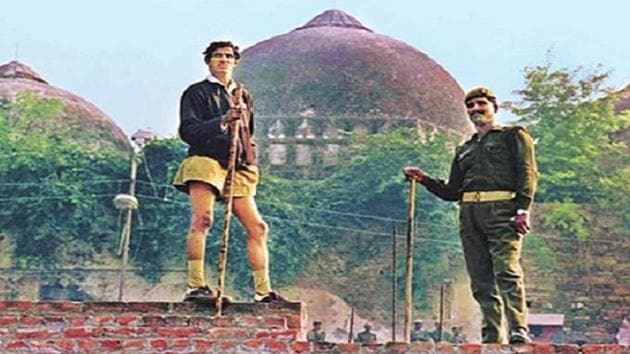Resolving Ayodhya dispute since 1859: The nine failed attempts at out-of-court settlements
Between 1859 and 2017, nine attempts have been made to resolve the Ram temple issue, but with no success
The quest to find an out-of-court settlement to the Babri Masjid-Ramjanmabhoomi dispute in Ayodhya has spanned nine attempts and more than 150 years. The latest one came on Tuesday from the Supreme Court who asked the two warring factions in the case, dating back to 1949, to give negotiated settlement another shot.

The Babri Masjid Action Committee, one of the parties, said it was open to the offer but on one condition -- no ‘outsider’ should be part of the process.
BJP MP Subramanium Swamy had urged the top court to constitute a bench to hear a batch of petitions which challenged the 2010 Allahabad High Court order, which ruled by a majority that the disputed 120 feet by 90 feet plot land be divided into three equal parts among the three petitioners — Sunni Wakf Board, Nirmohi Akhara and the party representing Ram Lalla.
Among the nine failed shots at negotiations, three were initiated by former prime ministers -- Atal Bihari Vajpayee, Chandra Shekhar and PV Narasimha Rao. The first was made by the British in 1859, when a fence was erected to separate the places of worship for both communities.
Attempts to use the services of non-Muslim religious figures like Sri Sri Ravishankar, the Kanchi Shankaracharya Jayendra Saraswati and Dalai Lama drew momentary response but failed in the long run.
HT traces all the attempts at negotiations that took place over 158 years:
1859
After clashes over the possession of the site, the British administration erected a fence to separate the places of worship. The inner court was to be used by Muslims and the outer court by the Hindus. The arrangement couldn’t last long as Mahant Raghubar Das filed a suit in 1885 seeking permission to build a canopy on Ram Chabootra.
1990
Prime minister Chandra Shekhar tried to resolve the dispute through negotiations when volunteers of the Vishwa Hindu Parishad (VHP), a right-wing group, partially damaged the mosque. But talks failed the following year.
December 16, 1992
Ten days after the mosque was razed, PV Narasimha Rao, prime minister of the Congress-led government at the Centre, set up a commission of inquiry under Justice Liberhan, which submitted its report 17 years later in June 2009. Its contents were not made public.
June 2002
Prime Minister AB Vajpayee set up an Ayodhya cell in his office and appointed a senior party official, Shatrughan Singh, to hold talks with Hindu and Muslim leaders. But the attempt did not move beyond the announcement.
July 26, 2010
The Lucknow bench of Allahabad high court reserved its judgement and advised all parties to resolve the issue amicably, but no one was keen. The court said the verdict would be pronounced on September 24.
September 23, 2010
A plea for an out-of-court settlement reached the Supreme Court, which said it would hear the matter five days later. The top court, however, rejected it and told the Allahabad high court to deliver its judgement.
February 24, 2015
Mohammad Hashim Ansari, the oldest litigant from the Muslim side, met Akhara Parishad president Mahant Gyan Das to discuss a new proposal for a resolution of the dispute, which they planned to place before the Supreme Court. But the out-of-court settlement formula did not take off.
April 10, 2015
Yet another attempt at a negotiation started when litigants from both parties met in Ayodhya. Swami Chakrapani, president of the All India Hindu Mahasabha, the main litigant from Hindu side, met the Muslim litigants, who were represented by Mohammad Hashim Ansari. The talks collapsed after the first meeting.
May 31, 2016
Leaders from both sides met again. Mahant Narendra Giri, the newly elected president of All India Akhara Parishad, met Mohammad Hashim Ansari, but before any headway was made, Ansari passed away.





